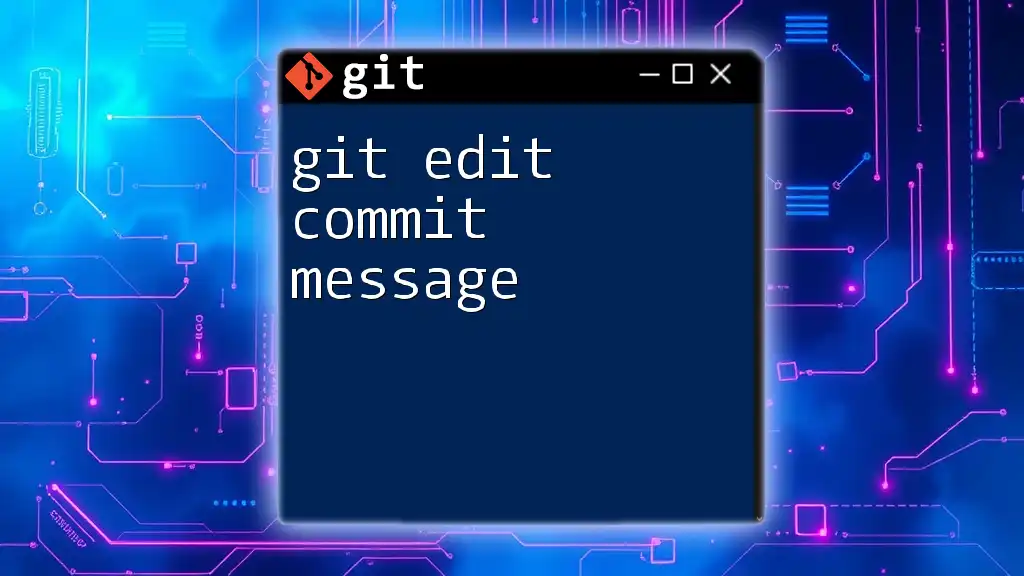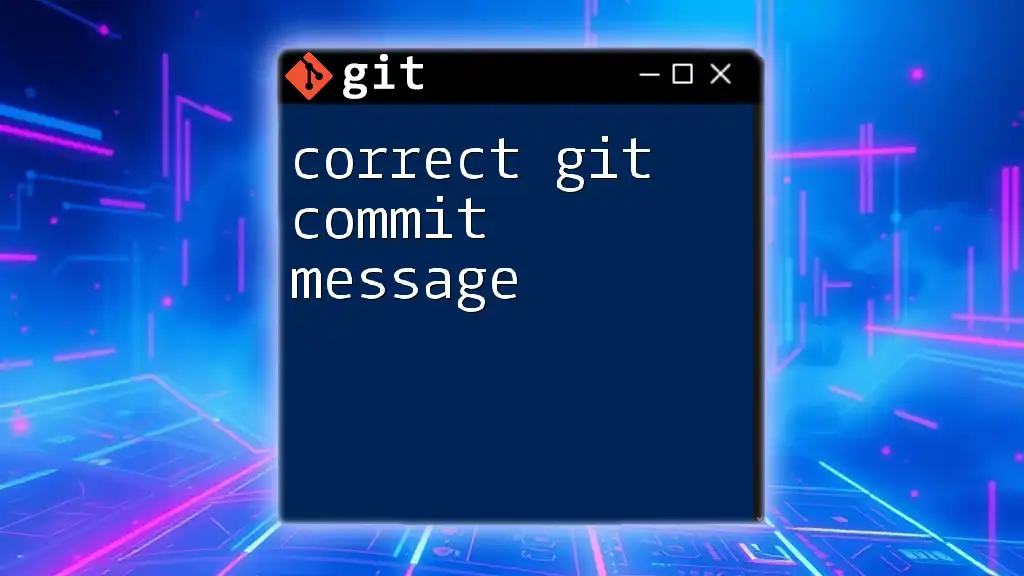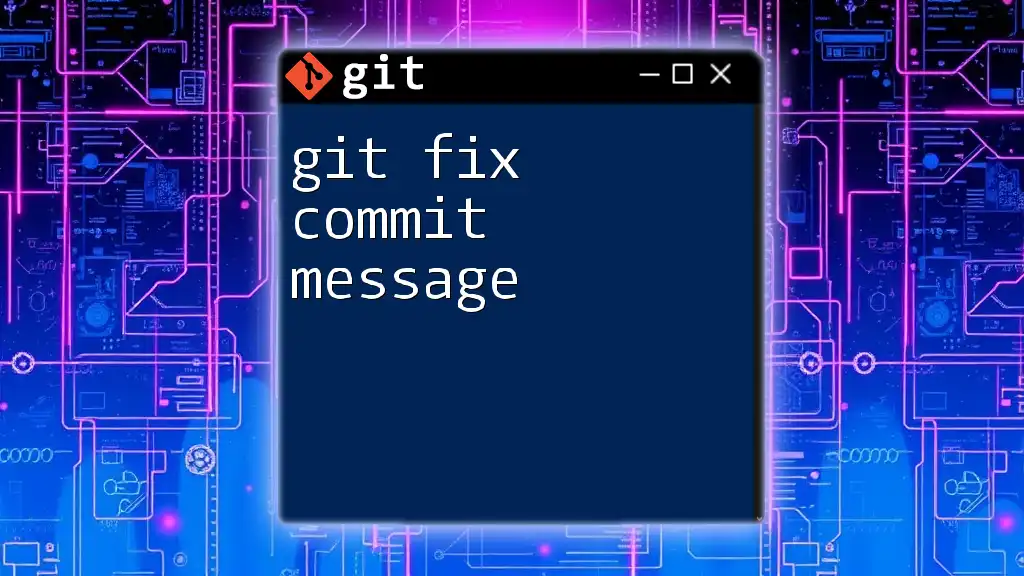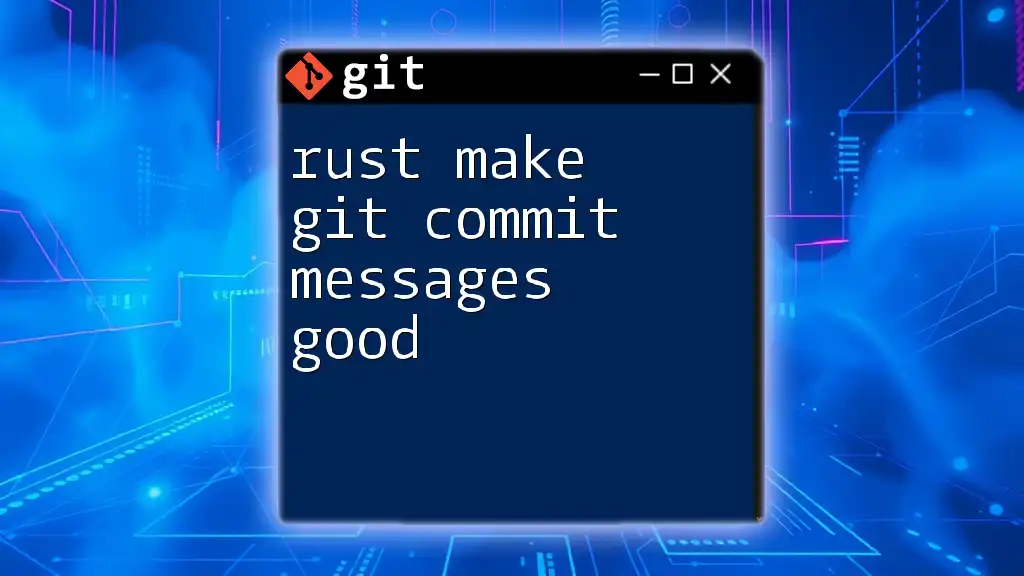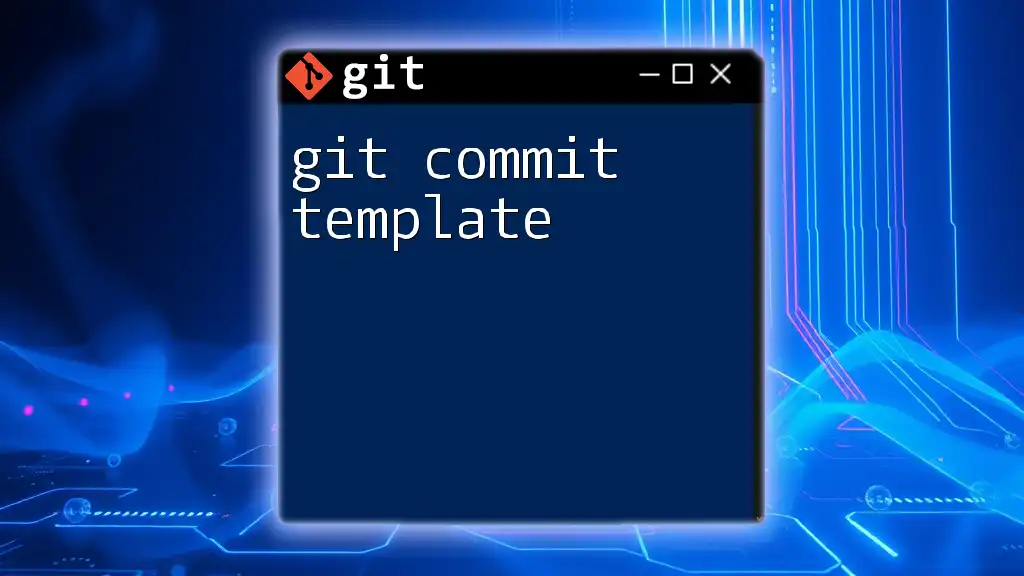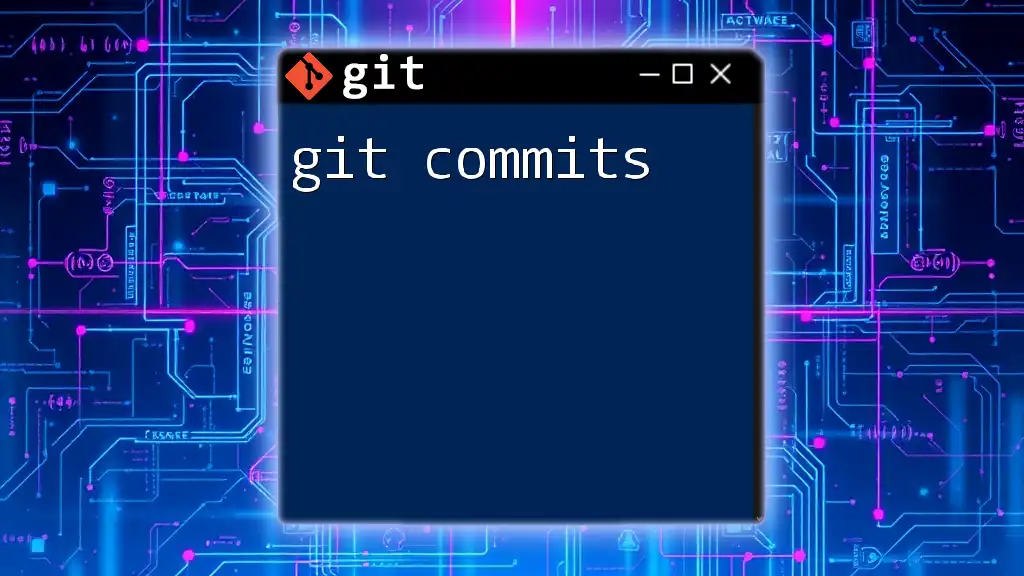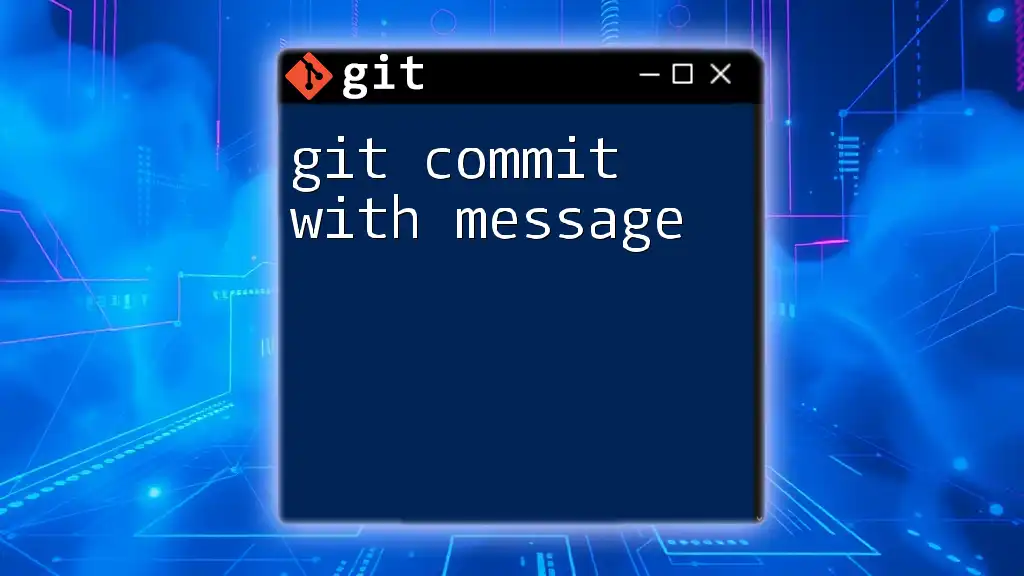A git commit message is a brief explanation of changes made in a specific commit, helping collaborators understand the purpose of the changes, and it can be created using the following command:
git commit -m "Add feature X and fix bug Y"
What is a Git Commit Message?
A git commit message is a brief, descriptive text that accompanies a commit in Git, offering insight into what changes have been made in the code. Each commit message acts as a snapshot of a specific state of the codebase, serving as a historical record of changes. They are essential for collaboration among team members as they communicate the purpose and intent behind the alterations made.
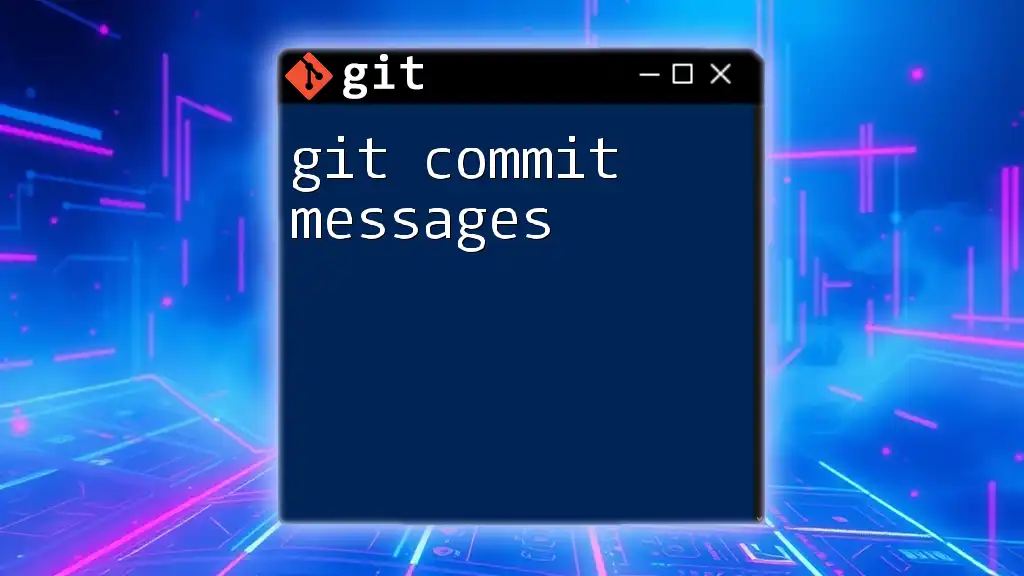
Understanding the Structure of a Commit Message
The Anatomy of a Commit Message
A well-crafted commit message typically consists of three main parts: a header, an optional body, and an optional footer.
Header
The header is the first line of a commit message and should summarize the changes succinctly. It is usually recommended to keep the header to 50 characters or less, ensuring that it is concise yet informative. Consistency in formatting is important; for example, using a specific prefix like `feat:` or `fix:` can help categorize the changes.
Body (optional)
The body of the commit message is optional but highly recommended when the changes require further explanation. It should cover the following:
- What the changes entail.
- Why these changes were necessary.
This section can provide deeper context, especially for complex modifications or features, helping the team understand the rationale behind each change.
Footer (optional)
The footer is another optional section where you can reference related issues or pull requests. This is especially valuable in larger projects where tracking changes linked to specific tasks or bugs is crucial. Mentioning issues helps to maintain a clear connection between code changes and project management.
Example of a Well-Formatted Commit Message
A well-structured commit message may look like this:
feat: add user login functionality
Implemented user authentication using OAuth 2.0.
- Added login button to the main navbar
- Set up routes for login and logout
- Created a user model to store authentication tokens
Closes #42
In this example:
- The header aptly summarizes a new feature.
- The body outlines the implementation details.
- The footer connects the changes to an issue tracker entry.
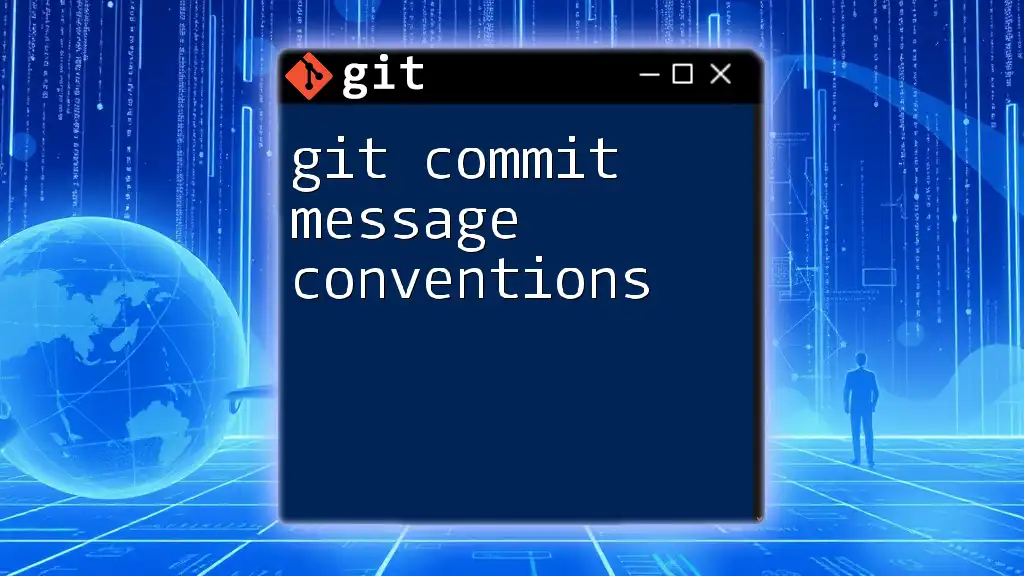
Best Practices for Writing Commit Messages
Keep It Short and Sweet
A good rule of thumb is to aim for a succinct summary in the header, ideally within 50 characters. This brevity helps team members quickly grasp the essence of what was changed without having to delve further into the details. A concise message supports effective communication within the team, especially in large projects.
Use the Imperative Mood
Using the imperative mood in the commit message creates a sense of action. Start your commit messages with verbs such as Add, Fix, Update, and Remove. This format aligns with the way Git itself generates commit messages, making them feel more natural and aligned with the functionality of version control.
Be Descriptive but Precise
While it’s vital to keep messages brief, they also need to be sufficiently descriptive to be meaningful. Strike a balance between detail and conciseness by using clear and specific language. Avoid vague descriptions, and instead, focus on providing helpful context about what was changed and why.
Group Commits Logically
Organize your commits logically. When making multiple changes, consider whether they form a cohesive group that could be communicated in a single commit. For example, if you fixed several bugs related to a feature, mention each fix in one commit rather than creating separate ones. This approach can significantly enhance the readability of commit history.
Reference Issues and Pull Requests
Linking your commit messages to relevant issues or pull requests is crucial for maintaining a clear connection between code changes and the project’s overall progress. Use references such as `Closes #42` to automatically link your changes to an issue on platforms like GitHub. This practice encourages a smoother workflow and keeps teams informed about the code's evolution concerning specific tasks.
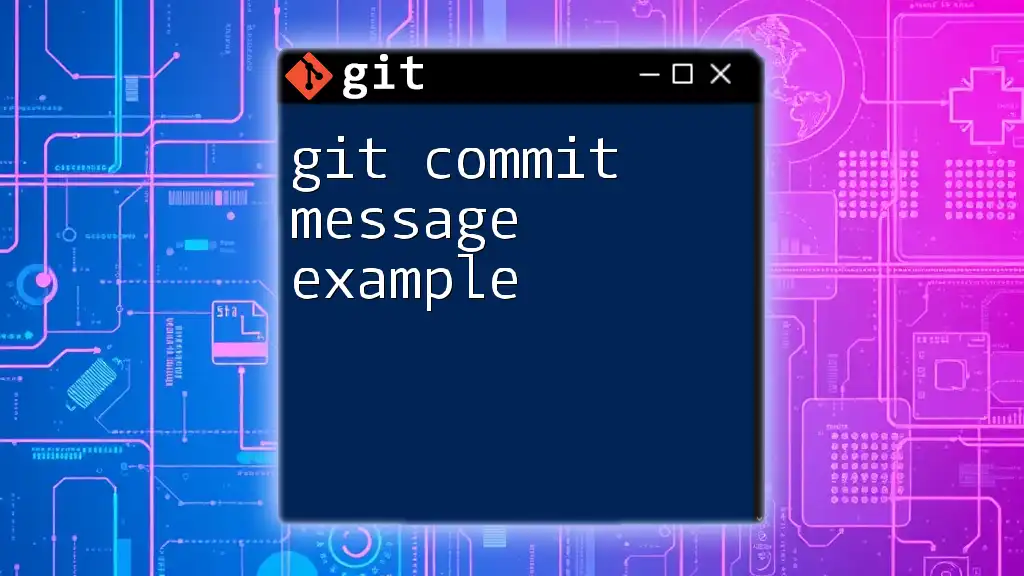
Common Patterns and Styles
Conventional Commits
Conventional commits provide a standardized format for commit messages, enabling better automation and readability. Commonly used types include:
- fix: for bug fixes,
- feat: for new features,
- docs: for documentation changes.
Using conventional commit formats helps support various tools that can automate versioning and changelog generation, simplifying the development workflow.
Other Commit Message Conventions
Beyond conventional commits, other styles have emerged that project managers and teams may prefer. For example, incorporating tags designed to link commits to ticketing systems (like JIRA) or formal branching methodologies (like GitFlow) can enhance clarity and communication around code changes.
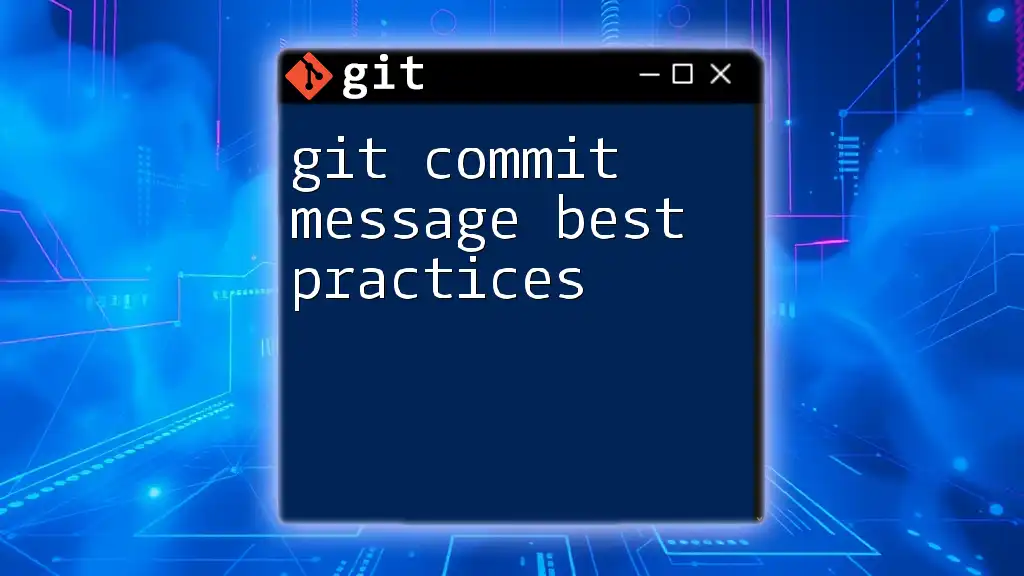
Tools and Resources for Writing Commit Messages
Git Commit Message Templates
To ensure consistency in commit messages, consider creating a commit message template. A template typically includes a standardized format to fill in relevant sections like the type of change, scope, and a brief description.
<type>(<scope>): <subject>
<body>
<footer>
This format guides developers to include all necessary parts of the commit message, improving both clarity and structure.
Useful Git Extensions
Explore various tools and extensions designed to enhance the commit message writing process. For instance, Commitizen is a fantastic tool that helps teams follow the conventional commits standard, guiding them through the commit message creation process. Similarly, commit linting tools can automatically check commit messages to ensure conformity with established standards.
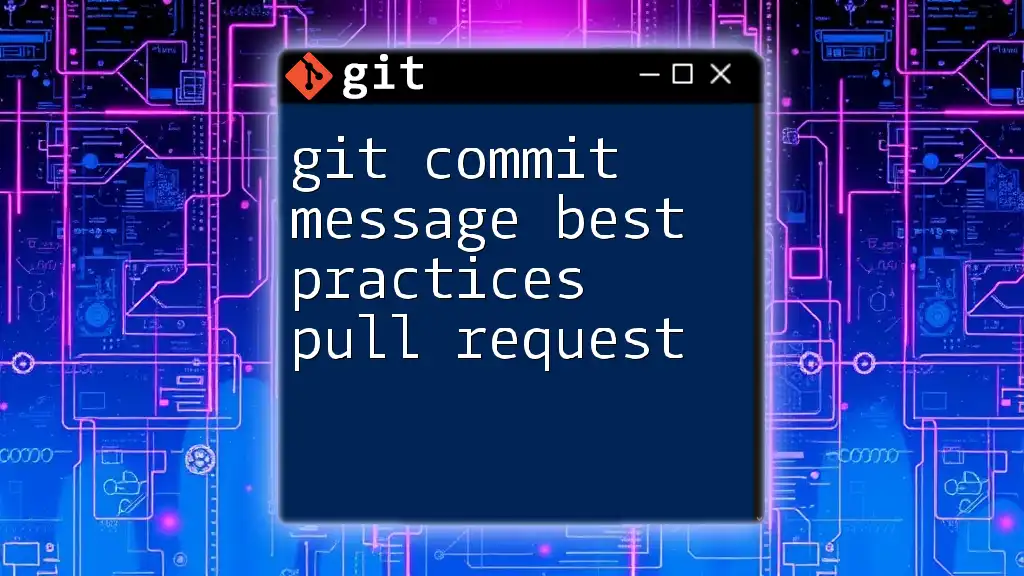
Conclusion
In summary, committing good git commit messages is an indispensable part of version control in software development. They not only aid in documenting changes but also facilitate communication among team members, making the development process more efficient. By following best practices, utilizing templates, and considering standardized formats, you can drastically enhance the quality and usability of commit messages, ultimately leading to a more organized and manageable codebase.
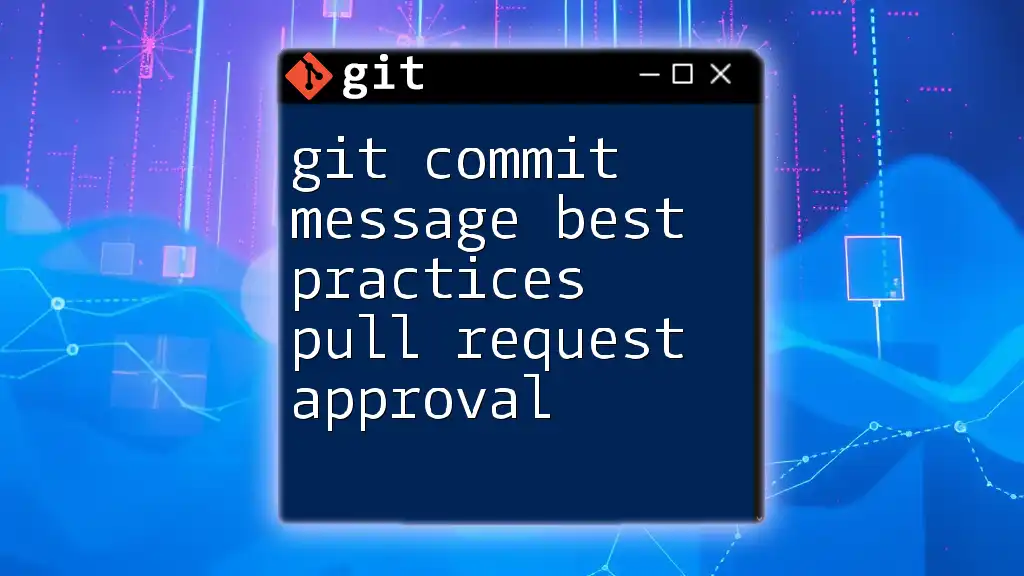
Additional Resources
For further reading on git commit messages, consider exploring the official Git documentation or engaging with articles that discuss enhancing software development practices. These resources provide valuable insights and tips that can help you and your team write better commit messages for future projects.







